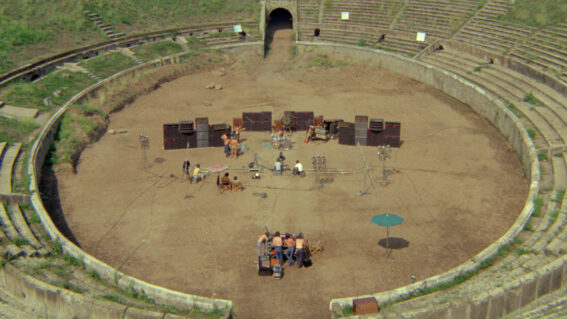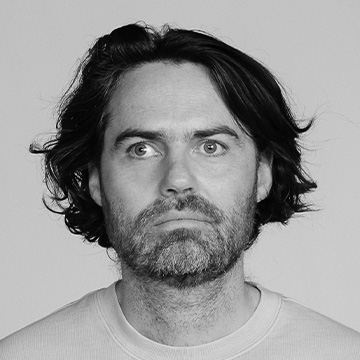The Girl with the Increasingly Problematic Character Motivations & Backstory
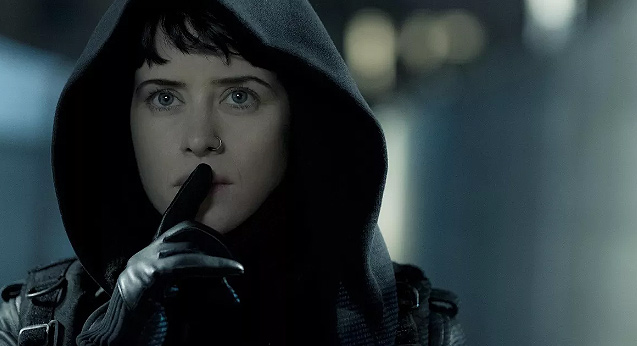
Since her conception by novelist Stieg Larsson in 2005, the world has seen multiple incarnations of troubled, goth computer hack-ess Lisbeth Salander: First in Larsson’s Millennium book trilogy written before his death in 2004 and published posthumously; then in the 2009 made-for-TV Swedish film adaptations, starring an instantly iconic Noomi Rapace; and, most recently, in David Fincher’s much-hyped but soon forgotten 2011 adaptation of the first book in the series, The Girl with the Dragon Tattoo.
Now, with the help of Fede Álvarez (best known for 2016 horror Don’t Breathe) Lisbeth is back with The Girl in the Spider’s Web, this time in the unlikely form of The Crown’s Claire Foy.
Based on the fourth novel in the series (and the first by Larsson’s successor David Lagercrantz) the timeline has jumped forward—picking up with Lisbeth now incommunicado, on a spree of vigilante feminist crime, and grieving the death of her younger sister.
Though production began on Spider’s Web just prior to the Harvey Weinstein allegations, the timing of its release, almost exactly a year later, still seems apposite. Though the problem of rampant sexual abuse, in Hollywood and elsewhere, has been illuminated, any actual consensus as to what justice might actually look like remains maddeningly elusive.
Initially, with Lisbeth’s Equalizer-esque hobby, it seems Spider’s Web might actually be pitching an answer. In the film’s very first scene, she is seen laying in wait at the scene of a crime of domestic abuse, her face painted Blade Runner style, flanked by the wings of a very ostentatious sculpture: a very clearly signposted angel of vengeance.
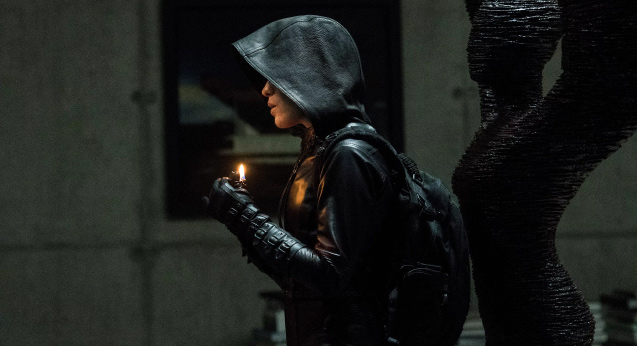
It is this version of Salander that will be most recognisable to those who have followed her various incarnations thus far; it is also the version that Spider’s Web is the least interested in. No sooner have we seen her rescue the battered housewife of a cruel, wealthy businessman than Lisbeth is embroiled in a blandly Bond-ian organised crime drama: hunting down nuclear codes, saving precocious children and driving flash cars very fast.
Yet while this shift from Scandi-noir to a secret agent movie is jarring—and pretty stupid—the greater crime here is how purely, knowingly cynical it is.
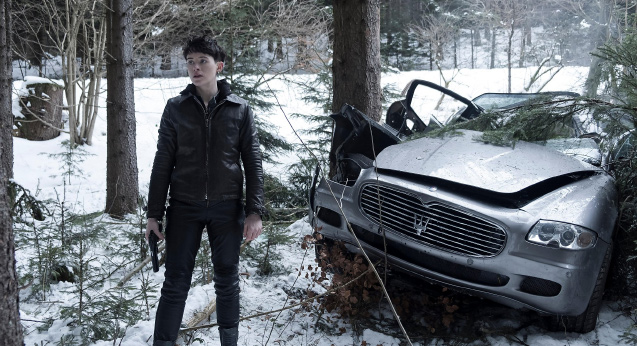
At a time when superhero narratives are basically ubiquitous, The Girl in the Spider’s Web is, essentially, an origin story: and like so many before her, the source of Lisbeth’s badassery and espionage prowess is revealed to be trauma.
Those familiar with her previous exploits will, of course, know that Lisbeth has this in spades—Dragon Tattoo featuring an extremely grueling and explicit rape scene—but apparently, a refresh was in order, and thus here it is revealed that she was also sexually abused as a child. This trauma, Spider’s Web imagines, does not just dwell in Lisbeth’s depths—it is her depths, the source of her brashness, brilliance—and now the ability to take down international organised crime rings.
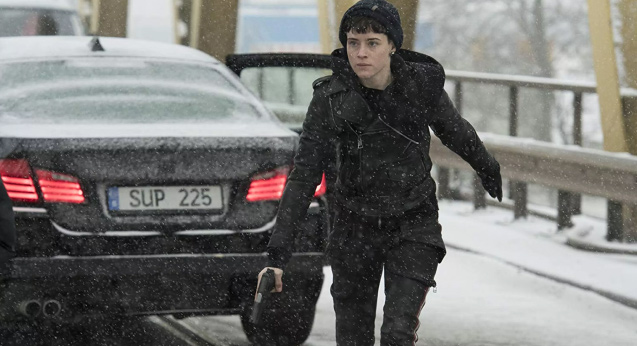
Of course, this uncomfortable fetishisation is not exactly new. At the height of Millenium popularity, it was a well-circulated piece of trivia that Larsson was compelled to write the series after witnessing—and not intervening in—the brutal gang rape of a young woman at the age of 15.
With Dragon’s Swedish title literally translating to Men Who Hate Women, the series—and the character of Lisbeth who is allegedly named after the woman who’s assault Larsson witnessed—are thus thought to be expression of Larsson’s guilt and regret, as well as a tribute to the victim.
Though this lore has always been questionable, it has also been generally accepted, and even well received: a rare instance of male storytellers consciously confronting the horrors of rape culture, while generously gifting us all another ~strong female character~.
Yet it’s also almost like a caricature of male cluelessness: multiple male authors and multiple male directors working for years to produce stories imagining that there is a silver lining to women’s pain.
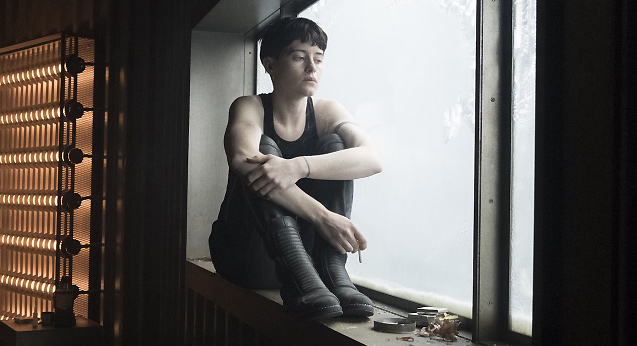
The idea that trauma can turn a person into a hero is hardly new; Bond, Batman, Spiderman, Superman etc. are each the product of troubling formative events. But, rather than dead parents or being a literally an alien, for Lisbeth this event is sexual abuse—something that is not so much used to complicate her as it is to simplify her.
In Spider’s Web, Lisbeth is little more than the lump sum of her trauma. The film’s final scenes, in which Lisbeth is reunited with the sister who acquiesced to their father’s demands (instead of fighting back like Lisbeth), reveal that their alternate coping mechanisms for the same abuse have determined their trajectories and turned them into binary opposites, from their moral compasses to their preferred aesthetics.
Where Dragon Tattoo—and Larsson’s larger Millenium project—could be classified within the genre of rape-revenge, Spider’s Web is not particularly concerned with the idea of justice that has previously preoccupied Lisbeth. Instead, her trauma is infinite and integral; the impetus, even for a franchise.
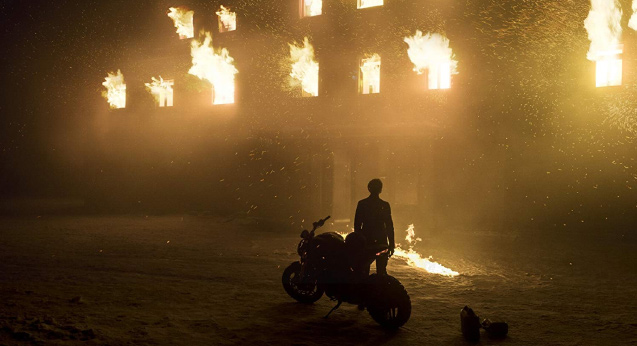
However well-meaning Larsson, and the various directors adapting his source material, may have been, Lisbeth has always been the product of pure male fantasy. Yet, while perhaps in her home territory this served a purpose—the books are known for their critiques of various problems in Swedish society—on Hollywood turf, these political underpinnings are lost in translation.
Spider’s Web may preserve (and augment) Lisbeth’s lurid past, but has no interest in providing confrontation or catharsis. Instead, what was once a rape-revenge drama becomes a rape-victim-turned-secret-agent drama: an edgy, suitably glib creation myth for the girl in the Hollywood machine.






